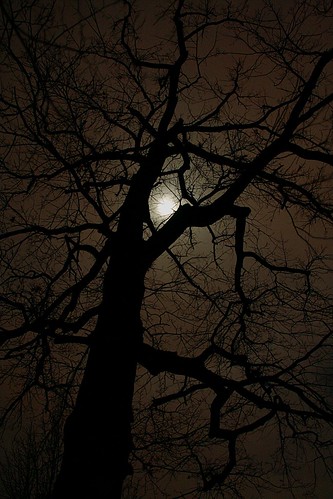If making sense of trees seems daunting with the leaves to help you, it can seem downright impossible without them. But if you look closely, there are lots of clues: seed pods, leaf and flower buds, and bark can all help tell one tree from another even in the dead of winter. On Saturday we went out with a hardy crew to see what we could see in Sligo Creek park.
>> Do you have a favorite tree in the winter? Leave a comment below.
Hemlocks are rare in our area, but there happened to be a nice large one planted right by the parking lot where we started on Saturday. Notice the flat needles, growing more or less in a plane off each twig. Their cones are much smaller than a pine cone but similar in shape.
(See our previous post on
hemlocks and why they're struggling to survive.)
River birch is also fairly uncommon in our area. When you see it, it will be near water. Or in someone's yard: this tree has really attractive exfoliating bark and a very fine branching structure, made even frillier by catkins hanging off the ends of the twigs.
On our walk, a big river birch was covered in birds including nuthatches, titmice, and a woodpecker. I bet the layers of that bark are a good place to look for insects at this time of year.
One of the most common trees in our area is the
tuliptree (or tulip poplar). High up in the winter canopy, the seed clusters are a surefire way to identify this tree. The ground beneath the tree will probably be littered with seeds, as well.
(See also our post about the wonderful
flowers that produce these seeds.)
Sycamores also hold their seedpods through the winter: soft little balls of seeds that often attract birds. But what really makes sycamores stand out in our forest canopy is their white branches. Their lower trunks are often covered with exfoliating bark that makes a pattern a lot like army camouflage.
If sycamores are the lightest tree in our forest,
black walnuts are the darkest. It's not a perfect test, but often if there's a tree darker than all the others around it, it's a walnut. At this time of year, there may be a few stray nuts hanging on the branches or dropped on the ground to help you identify the tree.
(See also our
post on collecting black walnuts in the fall.)
Beeches are another tree with distinctive bark: it's grey and smooth, even when they're quite large. (This has made them the favorite of lovers and graffiti artists throughout the ages.)
Beech trees often hold their leaves into winter, and they have these distinctive leaf buds on the ends of each twig: thin and pointy.
In contrast,
ash trees have fat, squat leaf buds, to accommodate their big compound leaves. This can make the twigs look much blunter than the finely tapering branches of other trees.
Ash is one of the few tall trees native to our area that has leaves and branches that grow directly opposite each other. The side branches often curve toward the end of the branch, making a pitchfork shape.
Maples are the other tall trees common to our area that have opposite leaves and branches. Red maples have already set their buds for the tiny flowers that will bloom early in the spring. This gives the twigs a knobby look, even from far away.
(See also our post on
maple sap.)

Spicebush buds by the Natural Capital
has also set its flower buds for next year. The branches of spicebush are not opposite each other on the stem, but the flowers do tend to come in pairs. The surest way to identify spicebush is by smell: scratch and sniff a twig. If it reminds you of something like allspice or nutmeg, it's spicebush.
(See also our posts on spicebush
flowers and
berries.)
Even in December, we found some wild edibles on our walk as well:
oyster mushrooms and dock.
This was our last organized hike for 2010;
to get on a mailing list for 2011 send an email to matt@mattshabitats.com.












































